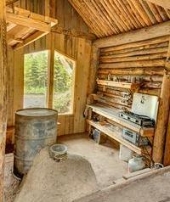There are moisture meters just for measuring the moisture in lumber, it would be a wise investment if you plan to dry a lot of wood.
I air dry some woods the way I do it is to set up my stack on a tarp, once all the wood is stacked with stickers I wrap the tarp around it leaving the ends open.
Next step is the fan, I set up a fan at one of the open ends and turn it on, this gives me air flow even with no wind available, the moving air will remove moisture from the air surrounding the stack thus allowing the stack to give off more moisture.
After a week I spot check with a moisture meter.
lumber stack probe
is a good unit, as is this one
data collection meter
Air dried lumber can still twist, the best way to avoid twist or cupping is to dry the whole log then cut the boards.








